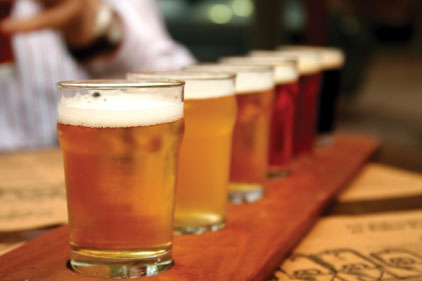"The beer consumer is really at the heart of the trends shaping the beer market," said Donna Hood Crecca, senior director, Adult Beverage Resource Group at Technomic. "The core consumers for the major domestic brands were among those most impacted by the recession, so their spending habits changed. At the same time, taste preferences evolved, especially among younger consumers, and we saw beer drinkers increasingly seeking different styles and more complex or varied flavor profiles. Both trends affected the powerhouse categories and brands, which resulted in the overall decline."
Domestic light beer, for example, accounted for more than half of total beer volume, so its 2.6% volume decline contributed to the industry's contraction. Regular domestic beer generated one-fifth of total volume; it declined 3.2%. These categories are populated by large-volume but mature brands. The ice beer and malt liquor categories also contracted.
Gains were made in several evolving categories:
Imported beer expanded in 2011 to reach 385 million cases, outperforming domestic beer. Mexican beers dominated and grew, finding favor with both mainstream and Hispanic consumers.
Craft beer grew 11.2% in volume to account for 5.5% of total beer volume; the category benefitted from consumer interest in artisan and local products featuring unique styles and flavor profiles. Several craft brewers expanded production or distribution, while newcomers continued to enter the market. The number of craft brewers and microbreweries increased by nearly 200 facilities.
Cider emerged as a bright spot. The smallest category within the beer industry tapped into many of the same consumer trends driving craft beer and posted the largest gain, 31.3%.
Super-premium domestic beer realized an 11.8% increase, sparked by product innovation and portfolio expansion by select labels.
Flavored malt beverage (FMB) experienced a 3.3% increase resulting from seasonal flavors and new drink introductions.
"These pockets of growth indicate the consumer palate is changing, which represents new opportunities for the beer industry," commented Crecca.
The two largest beer marketers - AB InBev and MillerCoors LLC - together generated nearly three quarters of total beer volume. Each worked to tap into the emerging segments through product innovation, brand extensions and new brand introductions aimed at portfolio diversification, often supported by strategic multi-faceted marketing campaigns.
Imported beer was led by Crown Imports LLC, which increased its share to 44.2% of the category on the strength of its Mexican portfolio; the company also grew its share of total beer. Among craft brewers, D.G. Yuengling & Son jumped ahead of the Boston Beer Company to rank as the largest-volume craft brewer; its flagship label also edged out Samuel Adams Boston Lager to be the largest-volume craft brand.
Leading Suppliers' Share of Beer Volume, 2011
AB InBev 47.9%
MillerCoors LLC 29.3%
Crown Imports 5.8%
Heineken USA 4.0%
Pabst Brewing Company 2.5%
Source: Technomic's 2012 BeerTAB (Trends in Adult Beverage) Report
Looking to 2012 performance, Technomic anticipates similar trends among the categories. "However, the strategic acquisitions, production innovation, new brand and line extensions occurring this year will enable some beer marketers to capitalize on emerging opportunities, thus shifting the beer industry landscape," noted Crecca.
